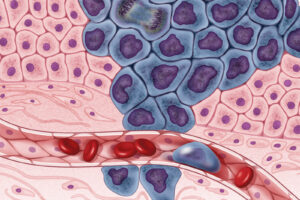
Figure 1: The logo of a commonly used moisturizer, Cetaphil. Typically available in a cream, this lotion promises to provide lightweight, all-day hydration.
Source: Wikimedia Commons
Despite their frequent recommendation by dermatologists and daily use in both personal routine and medical care, relatively little time has been afforded to the scientific study of moisturizers. Doctors simply consider them to be mild, oily substances, and have provided no specific definition. Regardless, as dryness-related dermatoses, or skin diseases, become more common, it is likely moisturizers will continue to be a key part of dermatology.
Different types of moisturizer provide similar effects while using different properties. Emollients consist mainly of lipids and oils that hydrate the skin to make it more smooth, soft, and flexible (Sethi, et. al, 2016). For example, some moisturizers aim to supplement squalene, a lipid found in the skin that demonstrates antioxidant and antitumor properties, using artificially hydrogenated squalane, as this version of the molecule is less susceptible to oxidation (Huang, et. al, 2009). Humectants, another type of moisturizer, are hygroscopic compounds that draw water from the dermis (inner layer of skin) and the surrounding environment into the epidermis (the outermost layer of skin). They are similar to emollients but are typically composed of low molecular weight substances. Often, humectants are used in tandem with occlusives, which create a hydrophobic barrier over the skin and reduce trans-epidermal water loss. Finally, some moisturizers come in the form of low molecular weight proteins to help replenish essential skin proteins.
Moisturizer is prepared in several different ways. Typically, it consists of some mixture of oil, other lipids, proteins, water, and an emulsifier. Some moisturizers also add natural substances, antioxidants, acidic components, vitamins, preservatives, or sunscreens generally for marketing benefits or to reduce oxidation of the moisturizer (Sethi, et. al, 2016). There has been more recent evidence that the use of moisturizer has significant effects on the skin, with some ingredients damaging or weakening the skin barrier and others immediately repairing and strengthening it (Purnamawati, et. al., 2017). For instance, the moisturizer Cetaphil [see Figure 1] contains panthenol, which promotes wound healing, and benzyl alcohol, which can irritate the skin (Skincarisma, 2020).
The most common use for moisturizers is to combat dry skin. Additionally, they are used for anti-inflammatory purposes as well as to slow down cell division (as in cases of psoriasis), reduce itching, fight microbes, and aid in the healing of wounds. More specific types of moisturizer have more specific uses. For instance, face moisturizers are designed to be non-greasy, protect the skin from environmental factors, and, in some cases, reduce puffiness or coloration. Body moisturizers are often used to treat dry skin and eczema; cosmetically they can be used as anti-aging agents. To get the best use out of moisturizers, it is recommended that they are lightly applied to moist skin to avoid oil folliculitis, the inflammation of hair follicles caused by the rubbing action of applying moisturizer. There are few drawbacks to the use of moisturizer; primarily consist of irritation and allergic reaction. And even these can often be avoided by swapping one moisturizer for another with different ingredients (Sethi, et. al, 2016). The ideal moisturizer will vary from person to person. However, it seems to be true that using moisturizer both cosmetically and medically have significant benefits.
References
-
Huang, Z. R., Lin, Y. K., & Fang, J. Y. (2009). Biological and pharmacological activities of squalene and related compounds: potential uses in cosmetic dermatology. Molecules, 14(1), 540–554. https://doi.org/10.3390/molecules14010540
-
Purnamawati, S., Indrastuti, N., Danarti, R., & Saefudin, T. (2017). The Role of Moisturizers in Addressing Various Kinds of Dermatitis: A Review. Clinical medicine & research, 15(3-4), 75–87. https://doi.org/10.3121/cmr.2017.1363
-
Sethi, A., Kaur, T., Malhotra, S. K., & Gambhir, M. L. (2016). Moisturizers: The Slippery Road. Indian journal of dermatology, 61(3), 279–287. https://doi.org/10.4103/0019-5154.182427
-
Skincarisma. (2020). Full ingredients list moisturizing lotion Cetaphil. https://www.skincarisma.com/products/cetaphil/moisturizing-lotion/ingredient_list#info-section
Related Posts
METMAP: Mapping metastatic progression
Figure 1: The start of metastasis – the movement of...
Read MoreMucins: The Medical Target of the Future
Figure: Diagram of Mucin Structure. Mucins are glycosylated membrane proteins...
Read MoreSingle Cell RNA Sequencing Enhances Understanding of Tumor Genetic Diversity
Figure 1: Researchers have shown that tumor cells are a...
Read MoreOlivia Brado



